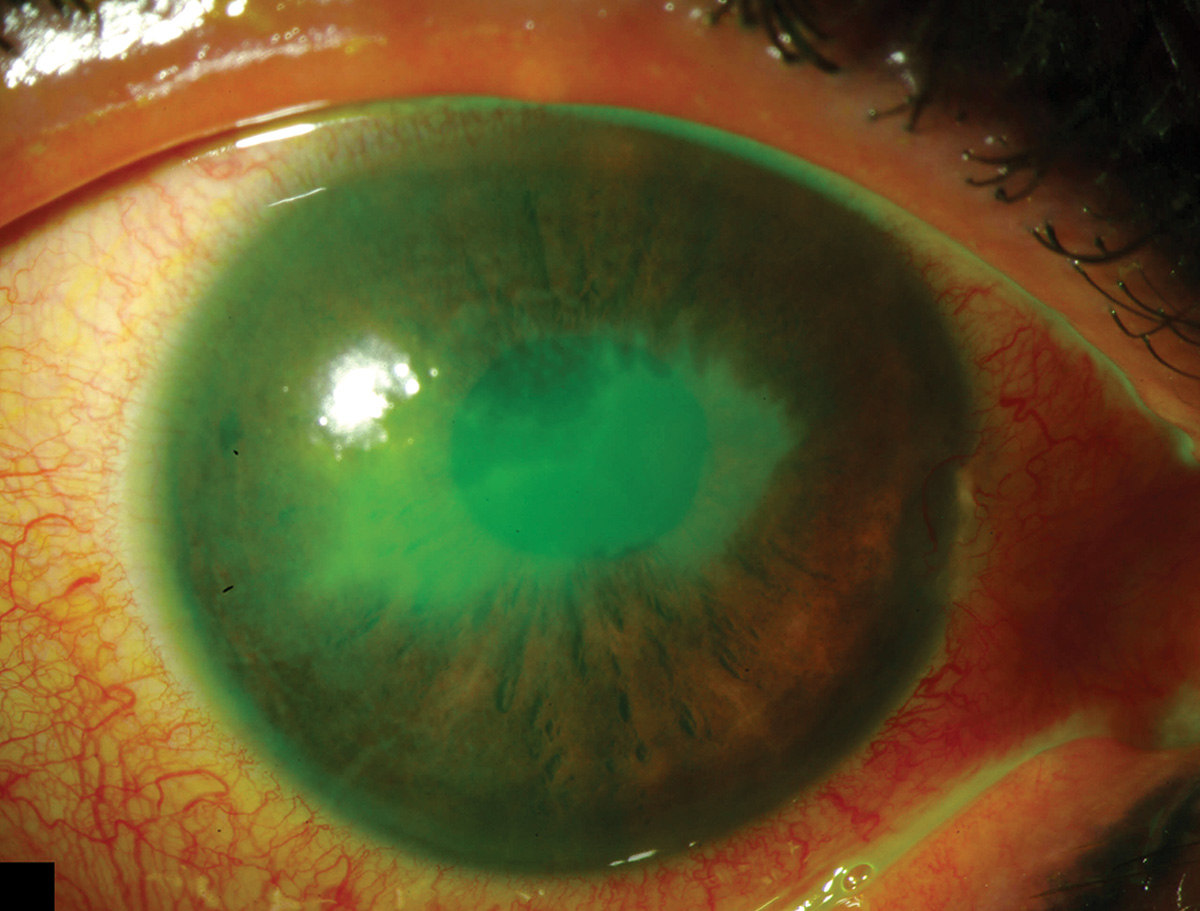 |
|
In patients with ocular graft vs. host disease, researchers found corneal sensitivity loss to be associated with reduced main trunk, branch and total nerve density. Photo: University of Iowa. Click image to enlarge. |
Graft-vs.-host disease (GVHD) affects multiple ocular structures from the front to the back of the eye. Specifically in the cornea, one complication seen in these patients is corneal neuropathy, which was the focus of a recent small study appearing in the journal Cornea. Its authors examined changes in corneal sensitivity in patients with ocular GVHD and investigated the relationship between this parameter, subbasal nerve changes and epitheliopathy in this group of patients, spotting numerous correlations between the metrics.
The retrospective study analyzed data and images of 36 patients who met the inclusion criteria (19 women, 17 men; mean age: 59.9 ± 10.5 years). The analysis looked at demographic information, ocular surface parameters, BCVA and corneal sensitivity measured with non-contact and Cochet-Bonnet esthesiometers. The following were also assessed: corneal fluorescein staining (CFS) and symptom scores, tear volume (Schirmer-I test) and subbasal nerve density (measured with in vivo confocal microscopy).
The mean corneal sensitivity measured by Cochet-Bonnet and non-contact esthesiometers was 5.9cm and 7.3mbar, respectively. Average ocular surface parameters included a CFS score of 6.9 and a Schirmer-I test result of 7.5mm/5 minutes.
The researchers reported that total corneal subbasal nerve density was inversely correlated with CFS scores. They also identified correlations between corneal sensitivity, nerve densities and ocular surface parameters, such as an inverse correlation between CFS scores and main trunk (r=-0.62) and branch (r=-0.59) nerve densities. Additionally, the authors found a significant correlation between reduced corneal sensitivity and higher CFS scores (r=0.66), as well as between higher pressures and lower total (r=-0.83), main trunk (r=-0.62) and branch (r=-0.72) nerve densities.
In the univariate analysis, “corneal sensitivity loss (assessed with non-contact esthesiometer) was correlated with advanced age of the patients and inversely associated with total, main trunk and branch nerve densities,” the researchers reported in their paper for Cornea. “In addition,” they continued, “sensitivity loss was inversely associated with punctal occlusion (cauterization or plug placement).”
While studies with larger cohorts are needed to validate these findings, these data suggest that in patients with ocular GVHD, corneal sensitivity loss is associated with reduced main trunk, branch, and total nerve density in patients. This research also proposes a correlation between reduced corneal nerve density, corneal sensitivity and severity of epitheliopathy.
Surico PL, Yavuz Saricay L, Singh RB, et al. Corneal sensitivity and neuropathy in patients with ocular graft-versus-host disease. Cornea. August 23, 2024. [Epub ahead of print]. |


